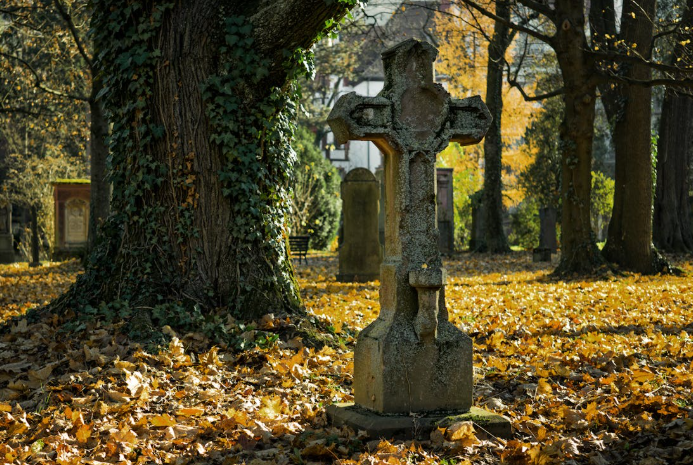With spooky season in full swing, locals are preparing for hayrides, costume parties, and, of course, visits to final resting places. As we drive past beautifully manicured lawns dotted with tombstones, the words “cemetery” and “graveyard” are often used interchangeably. But to the historical purist and the avid horror fan alike, there’s a subtle yet significant distinction between the two.
The difference isn’t about size or spookiness; it’s about church affiliation and geography.
The Definitive Distinction: Attached to a Church
The primary and most traditional distinction is rooted in religious history, specifically in how the land was consecrated and used:
- Graveyard: A graveyard is a burial ground directly attached to a church or place of worship. Historically, these burial grounds were small, usually located immediately adjacent to the church building. The land was considered “consecrated” along with the church itself. Due to limited space, graveyards rarely expand beyond their original footprint.
- The name itself is telling: it refers to the yard—the enclosed area—of the church.
- Cemetery: A cemetery is a large, public, or private burial ground that is not attached to a church. Cemeteries were developed later, starting in the 19th century, in response to population growth and a lack of space in city graveyards. They are typically much larger, designed as parks or landscapes, and are managed by commercial, municipal, or fraternal organizations, not exclusively by religious bodies.
- The word “cemetery” comes from the Greek word koimētērion, meaning “sleeping place.”
In short: If you see a church, it’s a graveyard. If you don’t, it’s a cemetery.
An Evolving Landscape: Modern Usage
While the historical difference is clear, modern usage has blurred the lines, particularly in North America:
- Size Matters: Most modern, large burial spaces—even those with religious sections—are referred to as cemeteries. They were designed to accommodate a large number of interments over an extended period.
- Park-like Settings: Cemeteries often feature elaborate landscaping, walking paths, benches, and even ornamental water features, reflecting their origin in the mid-1800s as places for the living to quietly reflect (known as the “Rural Cemetery Movement”).
- The Law: Legally, the term cemetery is the most common classification for any property used for the interring of human remains, regardless of its connection to a religious building.
So, while the old, quaint, enclosed burial ground next to an ancient stone chapel is a true graveyard, the sprawling, managed lawns along the highway where most modern burials occur are, by definition, cemeteries.
This Halloween, as you enjoy the ambiance of the season, you can impress friends with your knowledge that not all stone-lined fields of the dead are created equal. Just remember the simple rule: Church means graveyard.
Sign up for our Sunday Spectator. Delivered to your inbox every Sunday, with all the news from the week.

















